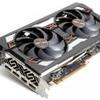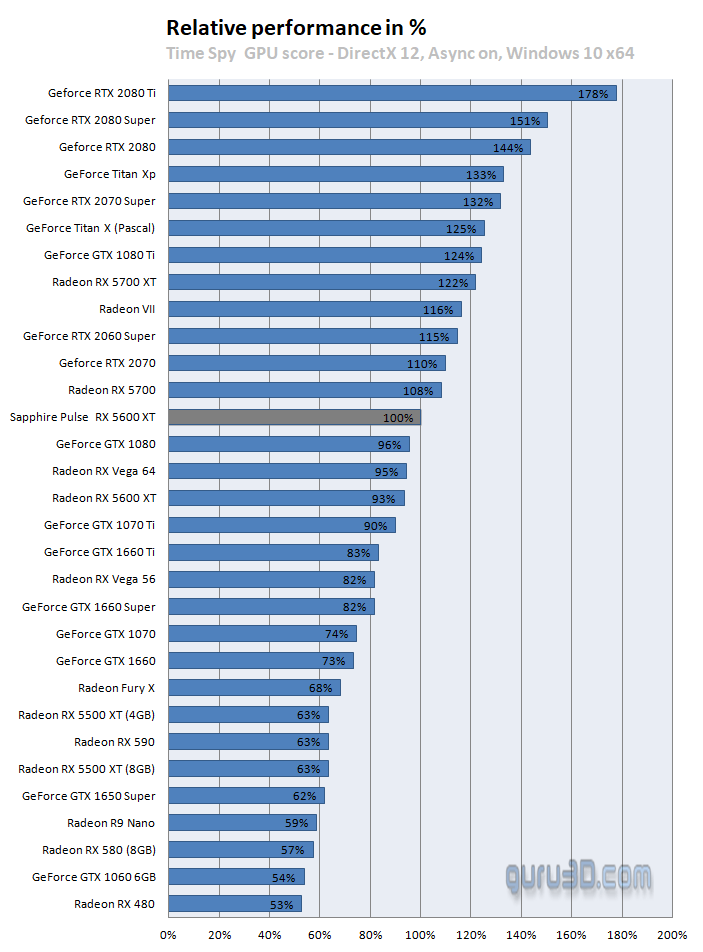Final words and conclusion
Final words
All by itself as a GPU, NAVI sits close towards last-gen Vega 64 performance levels. So the improved architecture works out well for AMD, it just works. Depending on how and where you measure the performance overall is at the very least interesting and in that respect the Radeon RX 5600 XT is fighting off the 1660 running to 2060 and sometimes even 2060 Super series from NVIDIA (with exceptions here and there), if you have the factory tweaked version of this series that is. Then there is, of course, the discussion on how relevant you find hardware-accelerated Raytracing support. On the AMD front, the cards will sit at the Radeon VEGA level of products, perf varies a bit here and there sometimes at Vega 56 level, sometimes close to Vega 64 level, and that's not a bad position to be in. Most of you don't care at this time, but much like anything in the tech industry, anything and everything will evolve, so this year we will likely see say am RX 5800 with just that.
Performance
As mentioned, Radeon RX 5600 XT show good performance in the 1920x1080 and Quad HD resolutions 2560x1440 realm of resolutions. That is not a bad position to be in reality as that includes the newer titles like Battlefield V, Metro: Exodus and others. Obviously architectures differ compared to NVIDIA but also last-gen VEGA, and that means you'll be seeing wins and losses in perf compared to team green as well as that vega series. 6GB versus 8GB is a bit of an icky thing, I do prefer 8GB cards and would always recommend that. That said at Full HD, 6GB seems to be pretty decent, but for any graphics card close to 300 USD or above, I would say 8GB was the better way to go and is something mandatory at 2560x1440. The rDNA architecture does show strength and IPC increase, especially seen from Polaris the results are pretty amazing. As mentioned on the introduction page, shortly before launch AMD submitted a new BIOS, that firmware increases performance and was a bit of an unusual move to witness really. It invokes a higher TGP for and memory frequency for the OC SKU models specifically to run faster (~7%). The reference clocked models, on the other hand, will not benefit from that advantage whatsoever (but can be manually tweaked to such values in merely seconds).
Pricing
The XT overall as a reference product is priced at 279 USD. This factory tweaked (OC) revision will sell for just 10 bucks more; 289 USD/299 EUR. The custom boards are roughly that same amount of money. We expect some brands to be more premium and more expensive. In this price category, however, feel you should not be passing 300 bucks. Remember physically there is no difference in between the regular and OC model of the pulse, it's just a pre-applied (but proper) tweak. If that difference indeed is just 10 bucks, I'd say go for that OC model and save yourself the hassle of manually tweaking.
Cooling & noise levels
The Sapphire Pulse dual-fan cooler lives up-to its reputation as it offers pretty normal acoustics at a reasonable DBa level of 37~38 DBa for the performance BIOS mode. At silent BIOS mode, the acoustics values are as low as 34/35 DBa. We're totally fine with that. Both modes hover at a 70 Degrees C range under gaming load.
Energy
With the new firmware the TDP for this 5600 XT we measure to be 167 Watts, we expect the none OC models thus reference clocked product to run ~25 Watts lower. That number varies a bit per game title, workload, resolution and even refresh rate of course. It's an okay wattage, especially compared to the competition's products with the same performance bracket.
Conclusion
Do more with less is a thing you often see in the technology sector, most processors are the same, just binned and reconfigured. For a more mainstream GPU figured, well we can design multiple GPUs, but that is expensive. So with the RX 5600, they simply use the 5700, it's PCB and component design and reconfigured things a bit as they removed 2GB and reconfigured the firmware. There's nothing wrong with that, and as you guys confirmed, the 5700 series has been a hit from the very beginning. So I expect the same for the 5600 series, albeit a notch slower at a starting price of 279 USD this might become a very attractive gaming GPU in both the 1920x1080 and sure even 2560x1440 resolution domain (albeit here I would prefer 8GB GDDR6). The Sapphire PULSE card is not a spectacular looking card really, I mean it's okay but that's the best I can make of it. It does come with a backplate and we can not complain about cooling and acoustic levels. A 6GB model is aimed at that MSRP price tag of 279 USD. The OC model is perhaps a tenner more expensive, albeit we'd not be willing to put down extra money for that if it ends up being much more expensive. The big conundrum; how acceptable you deem 6GB to be? I mean the performance up-to WQHD really isn't an issue. Tweaking remains a little icky as AMD again is firing off-limits on the memory and GPU clock, however, AMD stretches that leash quite a bit, so much so that we reached an extra 10% performance compared to the reference clocked product, that's really simply put, good. But that also means that all and any cards from any brand will reach and face that limitation and as such all cards would roughly show the same performance once tweaked. Overall we feel the PULSE 5600XT is an okay design aesthetically, but surely a seriously well-performing product.
As mentioned and shown throughout the review, a few days before launch AMD supplied new firmware(s) for this card, boosting performance. The firmware adds more slightly heat to the GPU, adds power consumption by ~25 Watts (coming for reference settings) jumping to just over 160 Watt energy consumption. AMD advertises a maximum Turbo clock of 1560 MHz for reference. The initial BIOS was perfectly in line hovering at a 1600 MHz delta. The new OC update/upgrade now sits at 1700~1750 MHz, and that is significant. The firmware update will be applied only towards OC and factory tweaked models, thus not reference. And already has been released to all brands (we're currently performing reviews on other AIB card).
The OC / factory tweaked models will also be allowed to run GDDR6 at 14 Gbps coming from 12 Gbps which you have seen in this review. At the time of writing, vBIOS files and final specs are still being developed by AMD board partners (and I am writing this less than 24 hours prior to launch). To remain transparent and clear with what we write down for you to make purchase decisions on, we felt a strong need to mention this development. The price for this OC model will be 289 USD / €299, and for that amount of money, you get a truly lovely, value and well-performing product. This might be the hit of the season price perf wise, and for once we can really recommend you to go for that OC/factory tweaked edition as it does make a substantial difference in performance. One last tip, once available and if you want to squeeze and save on every last penny, just grab the non-OC PULSE and flash the OC model BIOS in there.
- 3DMark FireStrike + Time Spy + Port Royale)
- Download AMD Radeon drivers
- Download NVIDIA GeForce drivers
- Download RX5600XT PULSE OC Performance BIOS
- Download RX5600XT PULSE SIlent performance BIOS
Sign up to receive a notification when we publish a new article.
Or go back to Guru3D's front page
LOAD"*",8,1
- Hilbert




